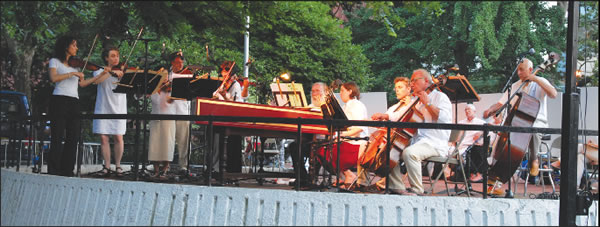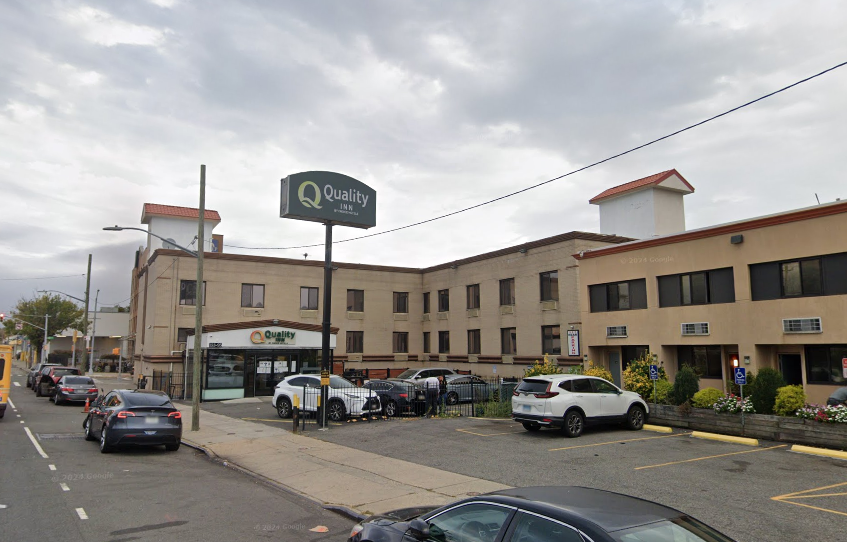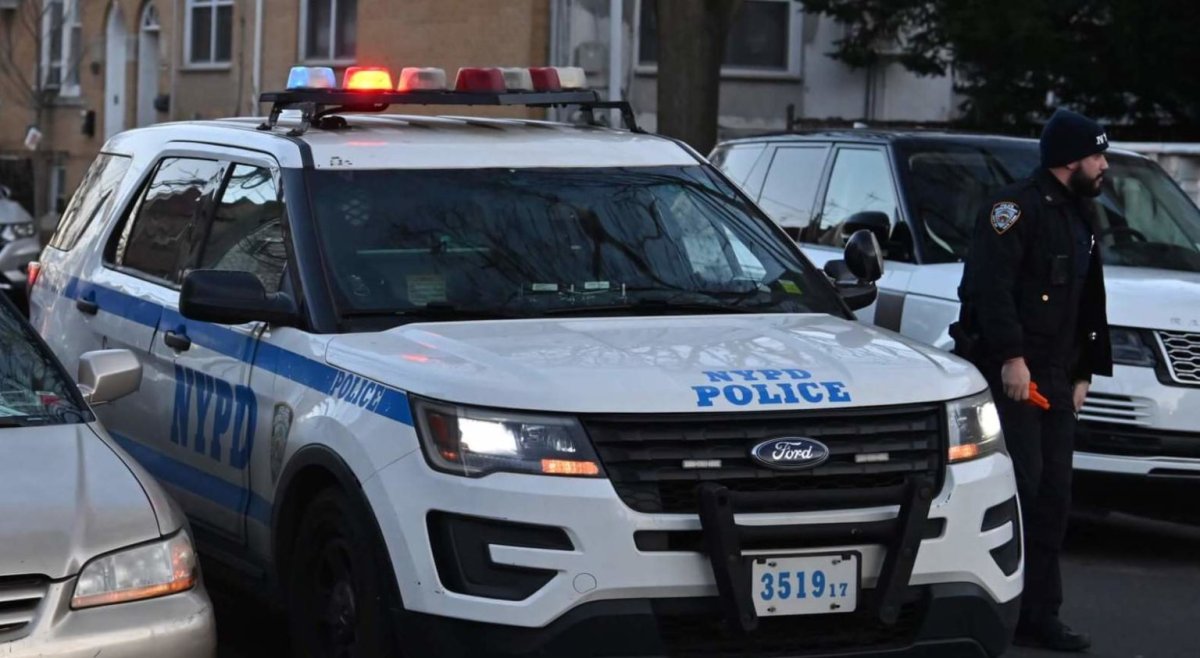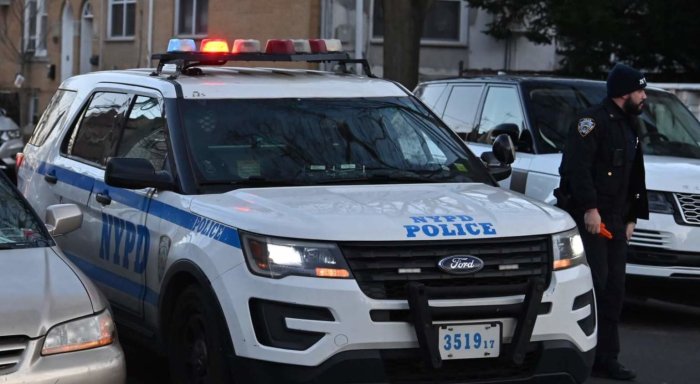By Lincoln Anderson
If the size of Washington Square Park’s stage isn’t increased in phase two of the park’s renovation plan, it will seriously hamper the festival’s ability to keep putting on high-quality, free performances.
That’s the urgent message that Peggy Friedman, the festival’s executive director, delivered to George Vellonakis, the renovation plan’s designer, at a meeting of Community Board 2’s Parks Committee last week.
Washington Square’s existing stage is 650 square feet in size. The renovation plan calls for a new stage, 28 inches off the ground, that will be smaller, at only 600 square feet. But Friedman says the new stage must be at least 800 square feet to meet the needs of the festival.
Because the Teen Plaza behind the existing stage won’t be rebuilt, musicians will now need more area to place their instruments, she said.
The current stage is roughly 36 inches tall. Friedman said they can live with losing 8 inches in height, but not giving up 52 square feet of surface area.
“The whole stage for us is a big issue,” Friedman said, in an interview the day after the meeting. The way the plan is currently configured, “There’s no backstage area,” she said. “We have people with very valuable instruments. The cello of Lutz Rath, our music director, once belonged to the Budapest String Quartet and is insured for $400,000.
“The way the stage is configured now, we could not get the Charles Mingus Orchestra onstage,” she added.
The Mingus group has 13 musicians, and — in the traditional jazz orchestra setup — requires risers to put the horns and drums on a higher level.
“We don’t think that this stage is well thought out,” said Friedman.
Founded in 1953, the Washington Square Music Festival is the second oldest free outdoor summer music series in New York. Last year, the festival put on five concerts, from June to the end of July.
The current stage was built for the festival, according to Friedman, but over the years, many other groups have come to use it, as well. In 2004, among the groups and events using the stage were the Community Board 2 Children’s Halloween Parade; New York University’s Summer Lunchtime Concert Series (twice a week throughout summer); Festival of India; Festival of Jewish Life (Chabad of Washington Square); The Village Church; traveling high school band performances; early-morning yoga throughout summer months; theatrical performances by the likes of the Village Idiots, Strange Sister Theater Group and Theater for the New City; New York Is Book Country; Arts in the Park; and the Fringe Festival.
Asked if the festival could continue to flourish with a stage of only 600 square feet, Friedman said, “I don’t know. What are we going to do — little quartets?”
Normally, the festival’s concerts feature anywhere from seven to 26 musicians onstage at once.
Asked if they could fit 26 musicians on a 600-square-foot stage, Friedman laughed and said, “No! Totally impossible! Totally impossible!”
Each musician at the festival is individually miked, meaning each has his or her own microphone stand, and accompanying electrical wires; so sufficient space is needed, Friedman noted.
Vellonakis’s suggestion was that a temporary platform could be added in front for performances. But Friedman wasn’t sold, noting the festival’s bad experience with platforms before the stage was built.
“In the ’60s, they lost our platforms,” she said. “They shoved them on Randall’s Island and lost them.”
The new stage’s surface will be granite, which Friedman said, they’re fine with.
Another design issue is the lack of a railing — since this could put conductors, who typically conduct with their backs to the audience, at risk of toppling off the stage and injuring themselves. Vellonakis’s solution calls for a temporary railing that can be installed for performances.
A longtime fan of the festival, former Councilmember Carol Greitzer recently wrote Parks Commissioner Adrian Benepe, urging him to approve a larger, 800-square-foot stage.
“As someone who has attended Washington Square concerts since the beginning, I am well aware of the musicians’ needs and the technical problems in mounting a first-rate performance,” Greitzer wrote. “The popularity of these concerts attests to the huge popularity of this program in the Greenwich Village community. I think I speak for all these people when I urge you to restore this space to the stage, so that the high performance level will not be compromised.”
Friedman recalled an era when music had an even more prominent setting the park.
In the 19th century, there was a traditional gazebo in Washington Square, with a roof,” she noted. “The musicians would love it — but that’s probably asking too much. … It would be nice if the Parks Department recognized that we are a Village treasure and would give us extra space, so we have elbow room.”
Because of the park reconstruction project, this summer’s concerts will be held at either St. Joseph’s Church or New York University, Friedman said, adding that St. Joseph’s has “great acoustics.”
Cristina DeLuca, a Parks spokesperson, said, “We are aware that the Washington Square Park Task Force is preparing a list of formal recommendations for the current plan, including increasing the size of the stage. Once we receive this document we will evaluate all of its proposals and respond to the task force as soon as possible.”


































